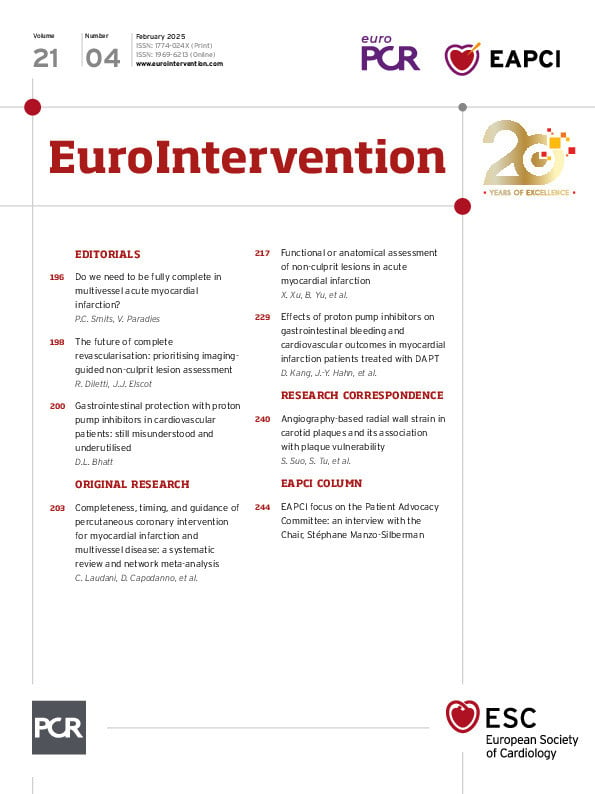For improved risk stratification of carotid stenosis, it is necessary to incorporate factors beyond mere stenosis severity1. Biomechanics is a key factor contributing to plaque vulnerability2. Our study introduces angiography-derived radial wall strain (RWS) to analyse carotid stenosis biomechanics and their association with plaque composition and vulnerability.
We included consecutive patients with internal carotid artery stenosis undergoing both carotid 3.0T magnetic resonance imaging (MRI) and digital subtraction angiography (DSA) within 1 week between July 2019 and December 2021 (Supplementary Figure 1). RWS was calculated as the ratio of the difference between the maximum and minimum lumen diameter (i.e., max−min) to the maximum diameter after automatic lumen segmentation and registration of four representative DSA frames of the cardiac cycle3 (Central illustration). RWSmax represented the lesion’s maximum RWS value. Plaque composition and vulnerability were determined by carotid MRI (Supplementary Table 1, Supplementary Figure 2). A detailed description of the eligibility criteria, carotid DSA and RWS analysis, carotid MRI and image interpretation, and statistical analysis is provided in Supplementary Appendix 1.
After screening, 110 patients...
Sign up for free!
Join us for free and access thousands of articles from EuroIntervention, as well as presentations, videos, cases from PCRonline.com

